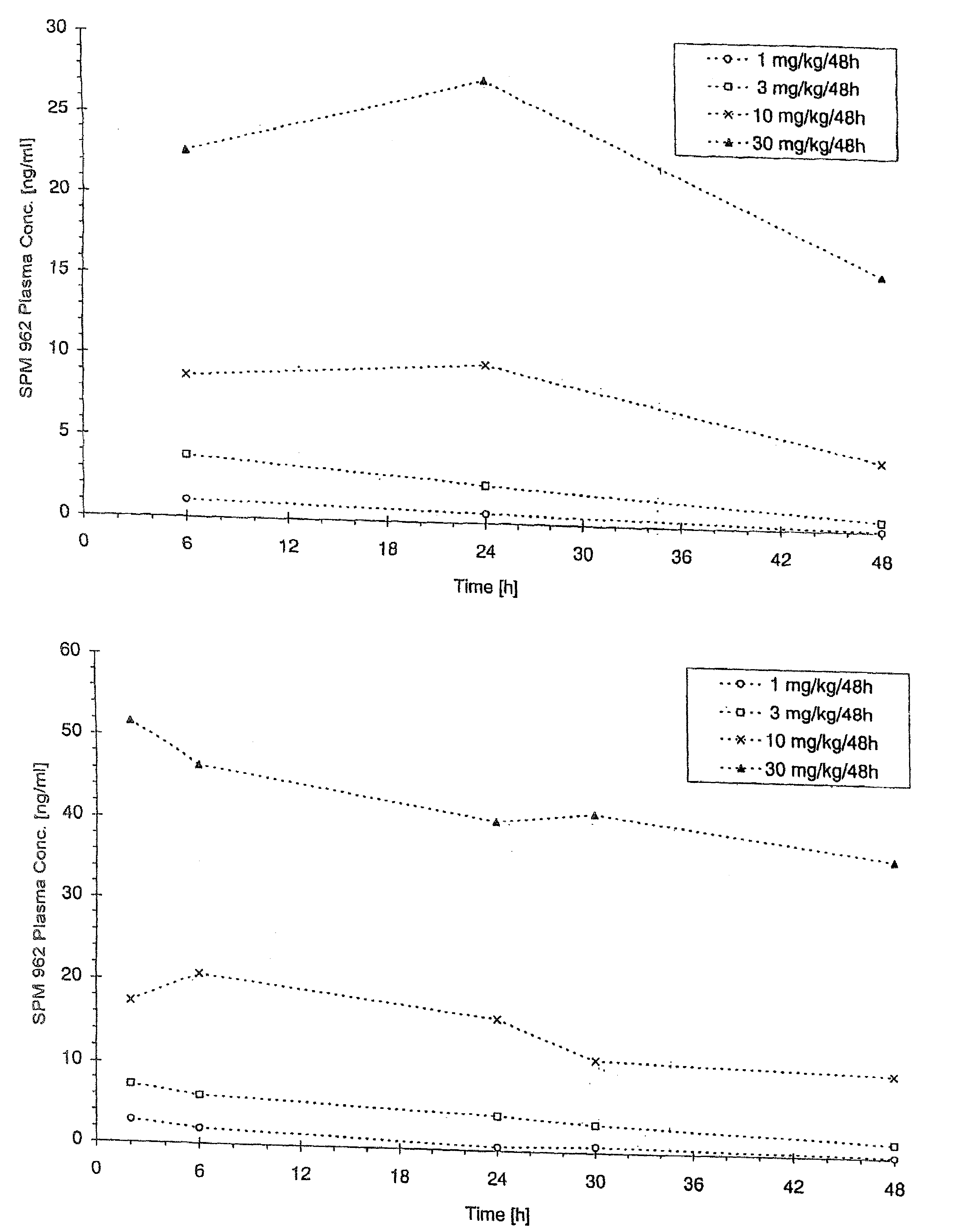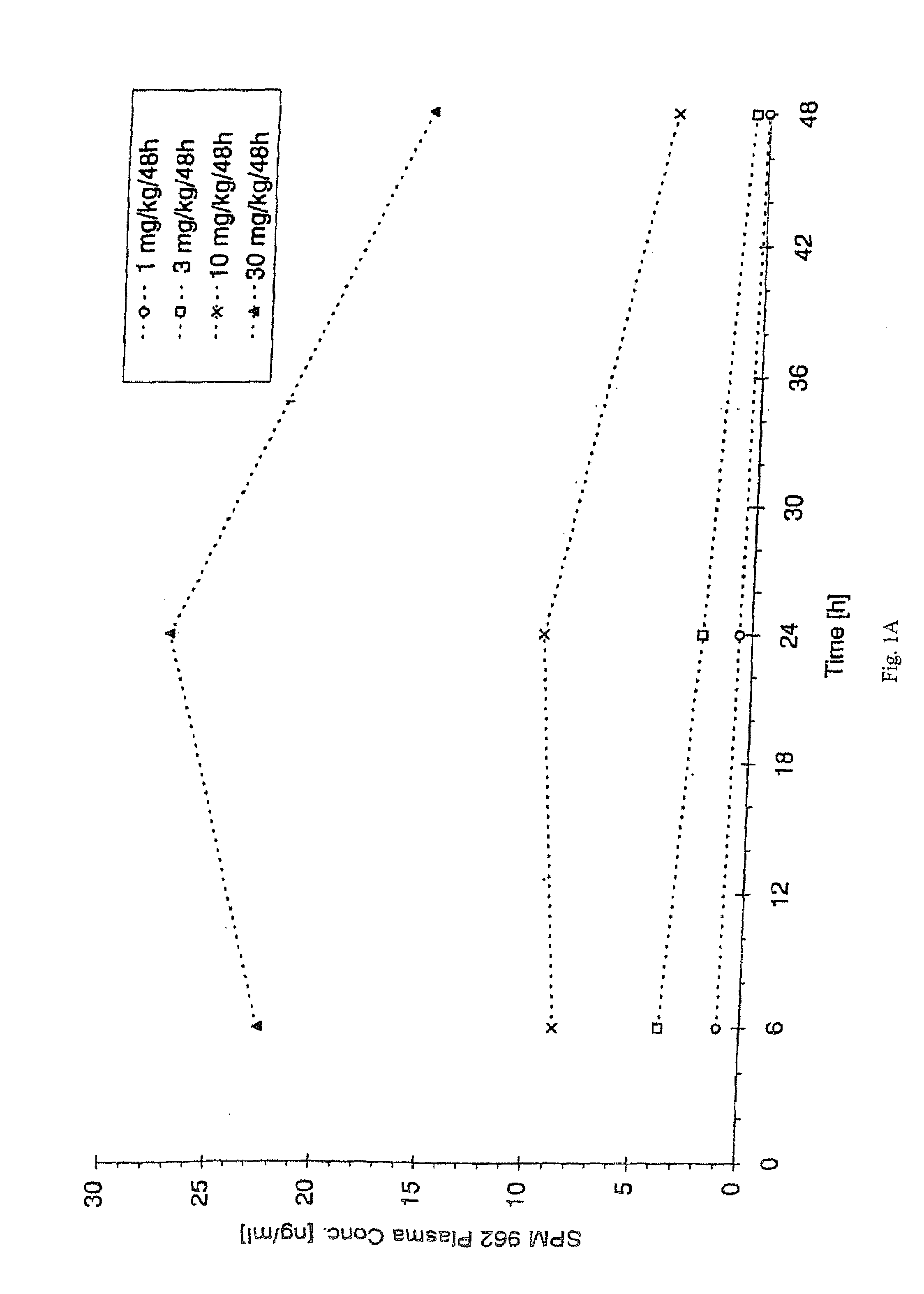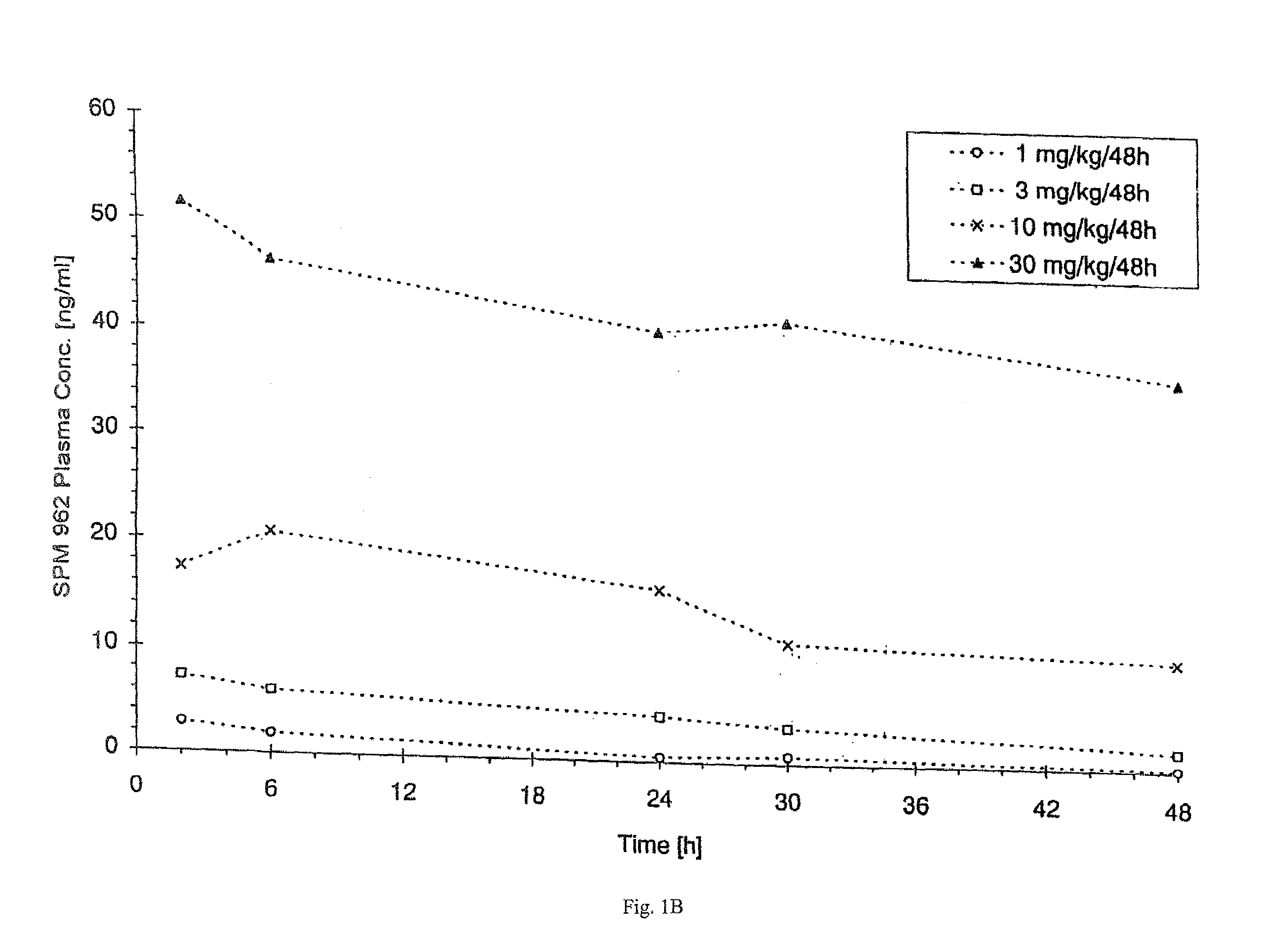Injectable pharmaceutical composition for systematic administration of pharmacologically active ingredients
a technology of pharmacologically active ingredients and pharmaceutical compositions, which is applied in the field of injectable pharmaceutical compositions for systemic administration of pharmacologically active agents, can solve the problems of limited bioavailability, weak mechanical, chemical or enzymatic degradation in the stomach, intestines or liver of patients, and ineffective orally taken
- Summary
- Abstract
- Description
- Claims
- Application Information
AI Technical Summary
Benefits of technology
Problems solved by technology
Method used
Image
Examples
implementation examples
[0124]1. Production and Crystallization of N-0923
[0125]N-0923 is produced and crystallized as described in U.S. Pat. No. 4,564,628.
[0126]2. Production of an N-0923 Suspension containing 1% N-0923 and 1% GML
[0127](a) Producing the Continuous Phase
[0128]1411.2 g Miglyol 812 was weighed into a Duran vial. 14.4 g Imwitor 312 was added to the miglyol and then heated for 30 minutes to 80° C. under simultaneous agitation. The clear solution was cooled down to room temperature and filtered.
[0129](b) Producing the Suspension
[0130]1188 g of the solution produced per (b) above was transferred into a lab-type glass reactor, 12 g of N-0923 was added and homogenized in a nitrogen atmosphere for 10 minutes using an Ultraturrax at 10,000 RPM. With the Ultraturrax running (at 2,000 RPM), the suspension was filled into brown glass vials.
[0131]3. Production of an N-0923 Suspension Containing 0.5, 1.5 and 2% N-0923 and 0.5%, 1% or 1.5%
[0132]The suspension was produced as described in 1. above except wi...
PUM
| Property | Measurement | Unit |
|---|---|---|
| time | aaaaa | aaaaa |
| body weight | aaaaa | aaaaa |
| half-time | aaaaa | aaaaa |
Abstract
Description
Claims
Application Information
 Login to View More
Login to View More - R&D
- Intellectual Property
- Life Sciences
- Materials
- Tech Scout
- Unparalleled Data Quality
- Higher Quality Content
- 60% Fewer Hallucinations
Browse by: Latest US Patents, China's latest patents, Technical Efficacy Thesaurus, Application Domain, Technology Topic, Popular Technical Reports.
© 2025 PatSnap. All rights reserved.Legal|Privacy policy|Modern Slavery Act Transparency Statement|Sitemap|About US| Contact US: help@patsnap.com



